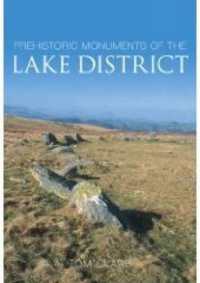- ホーム
- > 洋書
- > 英文書
- > Science / Mathematics
基本説明
Covers the theory of engineering vibration, with an emphasis on how to obtain models of real structures by finite-element-based computational techniques.
Full Description
FUNDAMENTALS OF STRUCTURAL DYNAMICS From theory and fundamentals to the latest advances in computational and experimental modal analysis, this is the definitive, updated reference on structural dynamics.
This edition updates Professor Craig's classic introduction to structural dynamics, which has been an invaluable resource for practicing engineers and a textbook for undergraduate and graduate courses in vibrations and/or structural dynamics. Along with comprehensive coverage of structural dynamics fundamentals, finite-element-based computational methods, and dynamic testing methods, this Second Edition includes new and expanded coverage of computational methods, as well as introductions to more advanced topics, including experimental modal analysis and "active structures." With a systematic approach, it presents solution techniques that apply to various engineering disciplines. It discusses single degree-of-freedom (SDOF) systems, multiple degrees-of-freedom (MDOF) systems, and continuous systems in depth; and includes numeric evaluation of modes and frequency of MDOF systems; direct integration methods for dynamic response of SDOF systems and MDOF systems; and component mode synthesis.
Numerous illustrative examples help engineers apply the techniques and methods to challenges they face in the real world. MATLAB® is extensively used throughout the book, and many of the .m-files are made available on the book's Web site. Fundamentals of Structural Dynamics, Second Edition is an indispensable reference and "refresher course" for engineering professionals; and a textbook for seniors or graduate students in mechanical engineering, civil engineering, engineering mechanics, or aerospace engineering.
Contents
Preface to Structural Dynamics—An Introduction to Computer Methods xi
Preface to Fundamentals of Structural Dynamics xiii
About the Authors xv
1 The Science and Art of Structural Dynamics 1
1.1 Introduction to Structural Dynamics 1
1.2 Modeling of Structural Components and Systems 2
1.3 Prototype Spring-Mass Model 7
1.4 Vibration Testing of Structures 12
1.5 Scope of the Book 12
1.6 Computer Simulations; Supplementary Material on the Website 15
References 16
Problems 16
Part I Single-Degree-of-Freedom Systems 19
2 Mathematical Models of SDOF Systems 21
2.1 Brief Review of the Dynamics of Particles and Rigid Bodies 21
2.2 Elements of Lumped-Parameter Models 24
2.3 Application of Newton's Laws to Lumped-Parameter Models 27
2.4 Application of the Principle of Virtual Displacements to Lumped-Parameter Models 34
2.5 Application of the Principle of Virtual Displacements to Continuous Models: Assumed-Modes Method 41
References 50
Problems 51
3 Free Vibration of SDOF Systems 56
3.1 Free Vibration of Undamped SDOF Systems 58
3.2 Free Vibration of Viscous-Damped SDOF Systems 61
3.3 Stability of Motion 66
3.4 Free Vibration of an SDOF System with Coulomb Damping 70
3.5 Experimental Determination of the Natural Frequency and Damping Factor of an SDOF System 72
References 77
Problems 78
4 Response of SDOF Systems to Harmonic Excitation 81
4.1 Response of Undamped SDOF Systems to Harmonic Excitation 82
4.2 Response of Viscous-Damped SDOF Systems to Harmonic Excitation: Frequency-Response Functions 87
4.3 Complex Frequency Response 93
4.4 Vibration Isolation: Force Transmissibility and Base Motion 96
4.5 Vibration Measuring Instruments: Accelerometers and Vibrometers 101
4.6 Use of Frequency-Response Data to Determine the Natural Frequency and Damping Factor of a Lightly Damped SDOF System 104
4.7 Equivalent Viscous Damping 107
4.8 Structural Damping 111
References 112
Problems 113
5 Response of SDOF Systems to Nonperiodic Excitation 117
5.1 Response of a Viscous-Damped SDOF System to an Ideal Step Input 117
5.2 Response of Undamped SDOF Systems to Rectangular Pulse and Ramp Loadings 119
5.3 Response of Undamped SDOF Systems to a Short-Duration Impulse: Unit Impulse Response 123
5.4 Response of SDOF Systems to General Dynamic Excitation: Convolution Integral Method 125
5.5 Response Spectra 128
5.6 System Response by the Laplace Transform Method: System Transfer Function 136
References 142
Problems 143
6 Numerical Evaluation of the Dynamic Response of SDOF Systems 147
6.1 Integration of Second-Order Ordinary Differential Equations 148
6.2 Integration of First-Order Ordinary Differential Equations 159
6.3 Nonlinear SDOF Systems 171
References 181
Problems 182
7 Response of SDOF Systems to Periodic Excitation: Frequency-Domain Analysis 184
7.1 Response to Periodic Excitation: Real Fourier Series 184
7.2 Response to Periodic Excitation: Complex Fourier Series 189
7.3 Response to Nonperiodic Excitation: Fourier Integral 195
7.4 Relationship Between Complex Frequency Response and Unit Impulse Response 199
7.5 Discrete Fourier Transform and Fast Fourier Transform 200
References 205
Problems 205
Part II Multiple-Degree-of-Freedom Systems—Basic Topics 209
8 Mathematical Models of MDOF Systems 211
8.1 Application of Newton's Laws to Lumped-Parameter Models 212
8.2 Introduction to Analytical Dynamics: Hamilton's Principle and Lagrange's Equations 218
8.3 Application of Lagrange's Equations to Lumped-Parameter Models 223
8.4 Application of Lagrange's Equations to Continuous Models: Assumed-Modes Method 228
8.5 Constrained Coordinates and Lagrange Multipliers 238
References 240
Problems 241
9 Vibration of Undamped 2-DOF Systems 248
9.1 Free Vibration of 2-DOF Systems: Natural Frequencies and Mode Shapes 249
9.2 Beat Phenomenon 254
9.3 Additional Examples of Modes and Frequencies of 2-DOF Systems: Assumed-Modes Models 258
9.4 Free Vibration of Systems with Rigid-Body Modes 266
9.5 Introduction to Mode Superposition: Frequency Response of an Undamped 2-DOF System 268
9.6 Undamped Vibration Absorber 272
Reference 275
Problems 275
10 Vibration Properties of MDOF Systems: Modes, Frequencies, and Damping 281
10.1 Some Properties of Natural Frequencies and Natural Modes of Undamped MDOF Systems 282
10.2 Model Reduction: Rayleigh, Rayleigh-Ritz, and Assumed-Modes Methods 298
10.3 Uncoupled Damping in MDOF Systems 302
10.4 Structures with Arbitrary Viscous Damping: Complex Modes 307
10.5 Natural Frequencies and Mode Shapes of Damped Structures with Rigid-Body
Modes 316
References 322
Problems 322
11 Dynamic Response of MDOF Systems: Mode-Superposition Method 325
11.1 Mode-Superposition Method: Principal Coordinates 325
11.2 Mode-Superposition Solutions for MDOF Systems with Modal Damping: Frequency-Response Analysis 330
11.3 Mode-Displacement Solution for the Response of MDOF Systems 342
11.4 Mode-Acceleration Solution for the Response of Undamped MDOF Systems 349
11.5 Dynamic Stresses by Mode Superposition 351
11.6 Mode Superposition for Undamped Systems with Rigid-Body Modes 353
References 359
Problems 360
Part III Continuous Systems 365
12 Mathematical Models of Continuous Systems 367
12.1 Applications of Newton's Laws: Axial Deformation and Torsion 367
12.2 Application of Newton's Laws: Transverse Vibration of Linearly Elastic Beams (Bernoulli-Euler Beam Theory) 374
12.3 Application of Hamilton's Principle: Torsion of a Rod with Circular Cross Section 379
12.4 Application of the Extended Hamilton's Principle: Beam Flexure Including Shear Deformation and Rotatory Inertia (Timoshenko Beam Theory) 382
References 385
Problems 385
13 Free Vibration of Continuous Systems 388
13.1 Free Axial and Torsional Vibration 388
13.2 Free Transverse Vibration of Bernoulli-Euler Beams 392
13.3 Rayleigh's Method for Approximating the Fundamental Frequency of a Continuous System 398
13.4 Free Transverse Vibration of Beams Including Shear Deformation and Rotatory Inertia 400
13.5 Some Properties of Natural Modes of Continuous Systems 401
13.6 Free Vibration of Thin Flat Plates 405
References 409
Problems 409
Part IV Computational Methods in Structural Dynamics 415
14 Introduction to Finite Element Modeling of Structures 417
14.1 Introduction to the Finite Element Method 418
14.2 Element Stiffness and Mass Matrices and Element Force Vector 419
14.3 Transformation of Element Matrices 430
14.4 Assembly of System Matrices: Direct Stiffness Method 438
14.5 Boundary Conditions 445
14.6 Constraints: Reduction of Degrees of Freedom 447
14.7 Systems with Rigid-Body Modes 451
14.8 Finite Element Solutions for Natural Frequencies and Mode Shapes 453
References 462
Problems 463
15 Numerical Evaluation of Modes and Frequencies of MDOF Systems 469
15.1 Introduction to Methods for Solving Algebraic Eigenproblems 469
15.2 Vector Iteration Methods 471
15.3 Subspace Iteration 480
15.4 QR Method for Symmetric Eigenproblems 483
15.5 Lanczos Eigensolver 489
15.6 Numerical Case Study 496
References 498
Problems 498
16 Direct Integration Methods for Dynamic Response of MDOF Systems 500
16.1 Damping in MDOF Systems 501
16.2 Numerical Integration: Mathematical Framework 504
16.3 Integration of Second-Order MDOF Systems 510
16.4 Single-Step Methods and Spectral Stability 516
16.5 Numerical Case Study 525
References 527
Problems 528
17 Component-Mode Synthesis 531
17.1 Introduction to Component-Mode Synthesis 532
17.2 Component Modes: Normal, Constraint, and Rigid-Body Modes 534
17.3 Component Modes: Attachment and Inertia-Relief Attachment Modes 539
17.4 Flexibility Matrices and Residual Flexibility 544
17.5 Substructure Coupling Procedures 549
17.6 Component-Mode Synthesis Methods: Fixed-Interface Methods 557
17.7 Component-Mode Synthesis Methods: Free-Interface Methods 559
17.8 Brief Introduction to Multilevel Substructuring 564
References 571
Problems 572
Part V Advanced Topics in Structural Dynamics 577
18 Introduction to Experimental Modal Analysis 579
18.1 Introduction 580
18.2 Frequency-Response Function Representations 584
18.3 Vibration Test Hardware 590
18.4 Fourier Transforms, Digital Signal Processing, and Estimation of FRFs 594
18.5 Modal Parameter Estimation 604
18.6 Mode Shape Estimation and Model Verification 612
References 615
Problems 616
19 Introduction to Active Structures 617
19.1 Introduction to Piezoelectric Materials 617
19.2 Constitutive Laws of Linear Piezoelectricity 620
19.3 Application of Newton's Laws to Piezostructural Systems 624
19.4 Application of Extended Hamilton's Principle to Piezoelectricity 627
19.5 Active Truss Models 630
19.6 Active Beam Models 637
19.7 Active Composite Laminates 641
References 646
Problems 647
20 Introduction to Earthquake Response of Structures 650
20.1 Introduction 650
20.2 Response of a SDOF System to Earthquake Excitation: Response Spectra 652
20.3 Response of MDOF Systems to Earthquake Excitation 660
20.4 Further Considerations 664
References 665
Problems 666
A Units 667
B Complex Numbers 671
C Elements of Laplace Transforms 674
D Fundamentals of Linear Algebra 682
E Introduction to the Use of Matlab 697
Index 715





![Pygmalion : [Fremdsprachentexte] - Englischer Text mit deutschen Worterklärungen. B2 (GER). A Romance in Five Acts- Shaw, Bernard - Original; Literaturhinweise - 9266 (Reclams Universal-Bibliothek 9266) (2011. 199 S. 148 mm)](../images/goods/ar/work/imgdatak/31500/3150092663.jpg)


